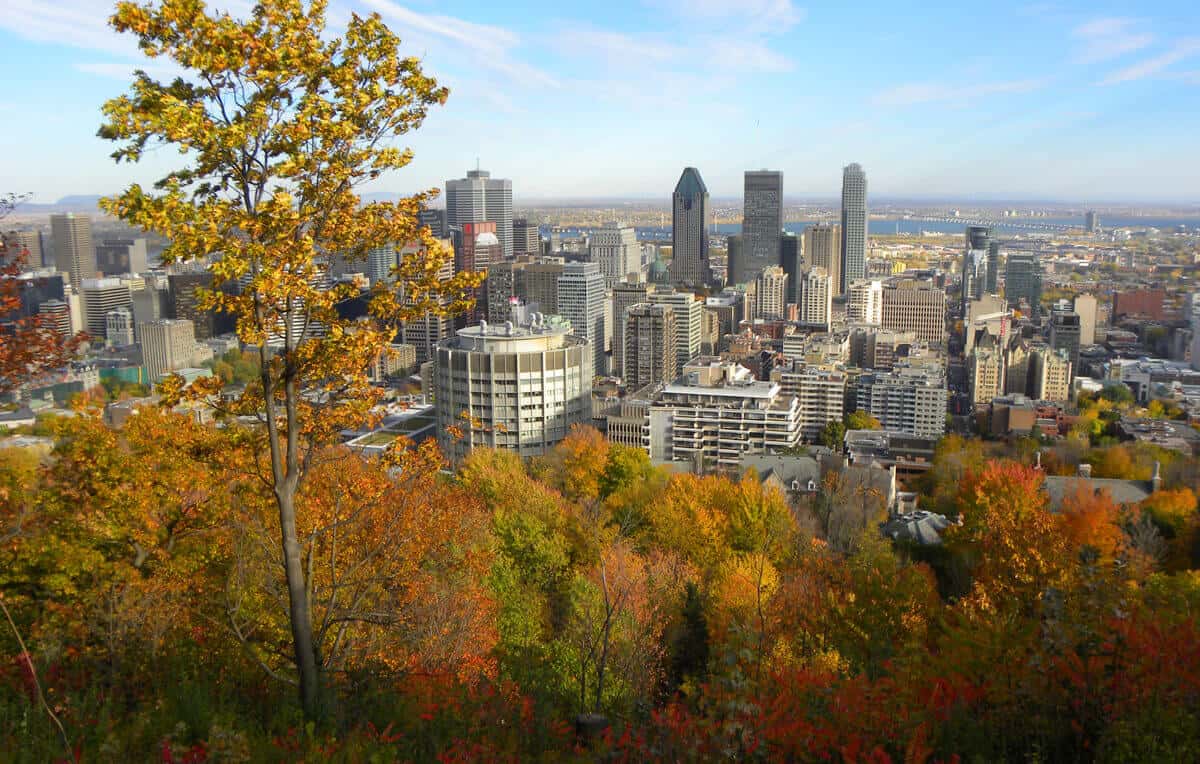

Exploring Old Montreal
When you visit Montreal, make sure to set aside some time to explore the historic district of Old Montreal. With its cobblestone streets, charming architecture, and rich history, it's a must-see for any traveler.
Historic landmarks and architecture
As you wander through Old Montreal, you'll come across several iconic landmarks and architectural gems. The stunning Notre-Dame Basilica is a must-visit, with its intricate Gothic Revival architecture and breathtaking interior. Another notable landmark is the Place Jacques-Cartier, a bustling square lined with historic buildings and lively street performers.
Must-visit museums
Old Montreal is home to some exceptional museums that offer a glimpse into the city's past. The Pointe-à-Callière Museum, located on the site where Montreal was founded, takes you on a journey through centuries of history. The Montreal Museum of Archaeology and History is another must-visit, showcasing artifacts and exhibits that tell the story of the city's vibrant past.
Charming cafes and bistros
After immersing yourself in history, take a break and indulge in the delightful cafes and bistros that dot the streets of Old Montreal. You'll find cozy patios, exquisite French pastries, and a charming atmosphere that is perfect for people-watching. Don't miss the opportunity to try traditional French-Canadian dishes such as poutine, a mouthwatering combination of fries, cheese, and gravy.
So, next time you find yourself in Montreal, be sure to explore the enchanting streets of Old Montreal, and immerse yourself in its fascinating history, world-class museums, and delightful culinary scene.

Discovering Mont-Royal
Ready to explore the breathtaking beauty of Montreal? Look no further than Mont-Royal, a stunning park located right at the heart of the city. Get ready to immerse yourself in nature, enjoy outdoor activities, and soak in the breathtaking views.
Hiking trails and scenic viewpoints
Embark on a hiking adventure as you navigate through the various trails that wind their way through Mont-Royal. Whether you're a seasoned hiker or prefer a leisurely walk, there's a trail for everyone. As you make your way up the mountain, you'll be rewarded with mesmerizing panoramic views of the cityscape – a picture-perfect moment that will leave you in awe.
Picnic areas and recreational activities
Mont-Royal offers a variety of picnic areas where you can relax and enjoy a delicious meal amidst the beauty of nature. Pack a picnic basket, grab a blanket, and find a cozy spot to unwind. Additionally, the park provides recreational activities such as tennis courts, soccer fields, and even a skating rink in the winter, providing fun opportunities for both locals and visitors.
Beautiful landscapes and wildlife
Prepare to be enchanted by the diverse landscapes and abundant wildlife that call Mont-Royal home. From lush forests and gently rolling hills to peaceful lakes and serene gardens, there's no shortage of natural beauty to enjoy. Keep an eye out for squirrels, rabbits, and a variety of bird species that add charm to the already picturesque surroundings.
So, get ready to experience the wonders of Mont-Royal and create lasting memories in this captivating Montreal treasure.

Vibrant Neighborhoods
When it comes to exploring Montreal, you'll find that the city is filled with vibrant neighborhoods, each with its own unique charm and character. Let's take a look at some of the must-visit neighborhoods that will add flavor to your trip.
The Mile End district
In the heart of Montreal, you'll find the hip and trendy Mile End district. Known for its artistic vibe and cultural diversity, this neighborhood is a melting pot of eclectic cafes, boutiques, and music venues. Take a stroll along Boulevard Saint-Laurent and discover the vibrant street art that adorns the walls. Don't forget to stop by the iconic Schwartz's Deli and indulge in their famous smoked meat sandwiches.
Plateau-Mont-Royal
For a bohemian atmosphere and picturesque streets, head over to the Plateau-Mont-Royal neighborhood. This artistic enclave is home to colorful houses, charming cafes, and local artisan shops. Explore the lively Avenue du Mont-Royal and enjoy the lively street performances and outdoor dining options. Don't miss out on visiting Parc Lafontaine, a beautiful park where you can relax and enjoy a picnic.
Le Village
If you're looking for a vibrant and lively nightlife scene, Le Village is the place to be. Located in the gay village of Montreal, this neighborhood comes alive at night with its numerous bars, clubs, and restaurants. Take a stroll down Rue Sainte-Catherine and immerse yourself in the vibrant energy of this colorful district. Don't forget to visit during the annual Montreal Pride Festival, where the streets are transformed with rainbow flags and celebrations.
No matter which neighborhood you choose to explore, Montreal will captivate you with its vibrant culture, unique charm, and warm hospitality. So pack your bags and get ready to experience the best of what this beautiful city has to offer.
Indulging in Montreal's Culinary Delights
Montreal is a city known for its rich food culture and diverse culinary offerings. From mouthwatering local dishes to world-class restaurants, this Canadian city is a haven for food enthusiasts.
Famous local dishes
One cannot talk about Montreal's culinary scene without mentioning some of its iconic dishes. Poutine, a delightful combination of french fries, cheese curds, and gravy, is a must-try when visiting the city. Smoked meat sandwiches from Schwartz's Deli and bagels from St-Viateur Bagel are also popular choices among locals and tourists alike.
Must-try restaurants and food markets
Montreal is home to numerous restaurants that cater to all taste buds. To experience fine dining, a visit to Au Pied de Cochon or Toqué! is highly recommended. For a taste of local cuisine, La Banquise is famous for its extensive selection of poutine variations. When it comes to food markets, Jean-Talon Market and Atwater Market offer a wide range of fresh produce, local products, and ready-to-eat delicacies.
Unique food experiences
Montreal offers unique food experiences that go beyond traditional dining. From food tours exploring different neighborhoods and food trucks serving gourmet street food to cooking classes where you can learn to make authentic dishes, the city has something for everyone. Don't miss the opportunity to indulge in a sugar shack experience during maple syrup season or visit the Montreal Museum of Fine Arts' food court, which combines art and culinary delights.
No matter what your culinary preferences are, Montreal is sure to satisfy your taste buds and leave you craving for more of its delectable offerings.
Experiencing Montreal's Art and Culture
Montreal, the cultural capital of Canada, offers a vibrant and diverse arts scene that is sure to captivate any art enthusiast. From world-class festivals to art galleries and live performances, this city has it all.
World-class festivals
Montreal is renowned for its internationally acclaimed festivals. The Montreal Jazz Festival and Just for Laughs Festival attract top artists and performers from around the world. These festivals create a lively atmosphere where locals and tourists alike can immerse themselves in music, comedy, and cultural events.
Art galleries and exhibitions
Visit Montreal's art galleries and exhibitions, where you can discover a wide range of contemporary and traditional artwork. The Montreal Museum of Fine Arts and the Musée d'art contemporain de Montréal showcase diverse collections that include paintings, sculptures, and installations from both local and international artists.
Theatres and live performances
Montreal is home to a thriving theatre scene, offering a variety of performances from Broadway shows to experimental plays. Enjoy a night of drama, comedy, or musicals at the prestigious Segal Centre for Performing Arts or the Centaur Theatre.
Immersing yourself in Montreal's art and culture is an enriching experience. Whether you are a fan of visual arts, music, or live performances, this city offers something for everyone. So, next time you visit Montreal, be sure to explore its vibrant arts scene and indulge in the creativity that surrounds you.

Shopping in Montreal
Rue Sainte-Catherine
When it comes to shopping in Montreal, one place that should be at the top of your list is Rue Sainte-Catherine. This vibrant street is lined with a wide variety of shops, from luxury boutiques to popular department stores. Whether you're looking for high-end fashion, trendy accessories, or unique souvenirs, you'll find it all on this bustling shopping strip. Don't forget to explore the underground shopping network, which stretches for over 32 kilometers and offers a climate-controlled shopping experience year-round.
Lively local markets
If you're in the mood for a more authentic and eclectic shopping experience, Montreal's local markets are a must-visit. Marché Jean-Talon and Atwater Market are two of the most popular options, offering a mouthwatering array of fresh produce, local delicacies, and unique crafts. These markets are not only great for finding fresh ingredients for a delicious meal, but also for immersing yourself in the local culture and discovering hidden gems.
Whether you're a fashionista searching for the latest trends or an adventurous traveler looking to explore local markets, Montreal has something for everyone. So grab your shopping bags and get ready to indulge in an unforgettable retail therapy session in the vibrant city of Montreal.

Outdoor Activities in Montreal
Are you an outdoor enthusiast looking for some adventure in Montreal? Look no further! The city offers a wide range of outdoor activities that will satisfy your craving for adventure and exploration.
Cycling along the Lachine Canal
One of the best ways to discover Montreal's beautiful landscapes is by cycling along the Lachine Canal. This 14.5-kilometer long pathway offers stunning views of the water, parks, and historic buildings. You can rent a bike from one of the many rental shops, or bring your own, and enjoy a leisurely ride along the canal. Take your time to stop and explore the charming cafes and boutiques along the way.
Kayaking on the Saint Lawrence River
For a more thrilling outdoor experience, try kayaking on the Saint Lawrence River. Paddle your way through the calm waters while enjoying breathtaking views of the city skyline and the surrounding nature. There are kayaking tours available for both beginners and experienced paddlers, so you can choose the option that suits your skill level. Don't forget to bring your camera to capture the unforgettable moments.
No matter which outdoor activity you choose, Montreal has something to offer for everyone. So, put on your adventure hat and embark on a memorable outdoor experience in this beautiful city.



